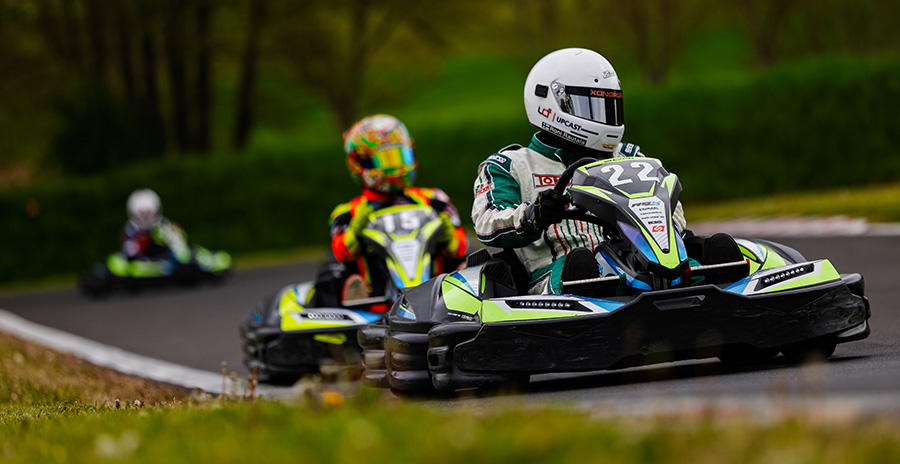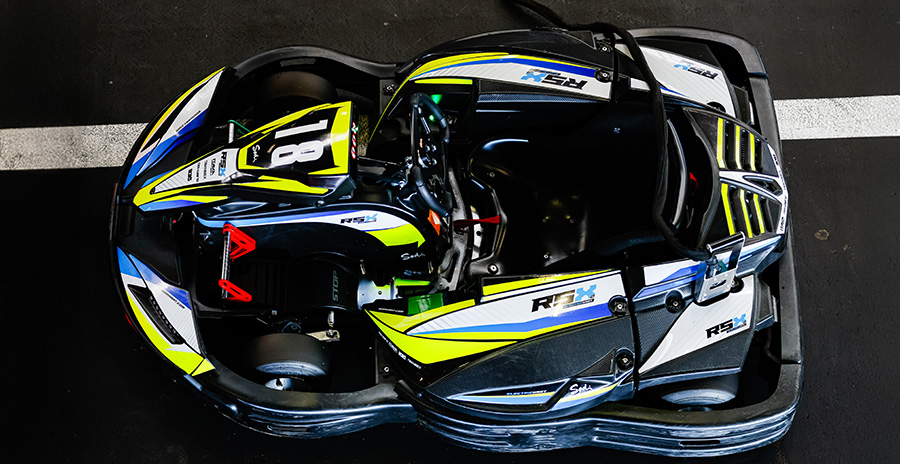Electricity in motorsports levels the playing field

UPCAST® copper rod is well-suited for all electrical applications and has become the preferred feedstock especially for fine and multi-wire drawing, where ductility requirements are most demanding and enamel wire production, where surface finish is of utmost importance.
The UPCAST® lines supplied by UPCAST OY are supplying an increasing amount of copper wire to the electric vehicle manufacturing industry, which is one of the reasons why we at UPCAST OY wanted to be part of the electrification of motorsport and support Finnish talent in this field.
Finland is well known for several racing legends from Formula 1 to the World Rally Championship. UPCAST OY supports Finnish racing driver Roni Rautala, who competes in the worldwide Sodi World Series in e-karting.
Roni Rautala is a third-generation racing driver. His father has competed in folkrace rally among ice racing, and his grandfather in rally and ice racing. The spark ignited in early childhood has continued for 20 years. Nowadays, Rautala races in karting, and indoors he participates in the worldwide Sodi World Series e-karting series.
“Overall, more sensitive and precise driving is required.”
In recent years, the audience following Formula racing may have experienced some boredom as predicting the champion has not been difficult. With a good car, it is possible to gain such a significant advantage that others cannot close that gap through driving alone. In e-karting, the scales can be balanced, as each car is adjusted to match each other and, for instance, the driver’s weight does not affect the car’s acceleration. The electric-powered karting car leaves the responsibility of winning solely to the driver. This is a fairly recent form of competition, in which championships have been held in Finland for only two years. Rautala’s extensive experience in karting provides a good perspective on the differences between e-karting and combustion engine cars.
– E-karting requires a lot of precision. Compared to a combustion engine, the power curve looks completely different. The electric motor delivers power immediately and the power curve rises steeply. In theory, an electric car is more forgiving of mistakes than a combustion engine car, but to get the best out of e-karting, one must drive with great precision because everything depends on the driver, Rautala says.
Sensors in electric cars measure, among other things, g-forces, and driving errors may cause the car to react and drop power, thinking the car is going to crash.
– Overall, more sensitive and precise driving is required, Rautala adds.
The best aspects of electric cars come into play on small, winding tracks. According to Rautala, the difference from combustion engine cars is not significant, at least in terms of speed. This is largely due to power being adjusted to suit the driver and the track.
– The sound is of course a decisive difference. The two-stroke engine creates an atmosphere with its sound on the track, but the driver gets into the driving mood with an electric car just as well and gets the competitive spirit on, Rautala says.

Weekend preparations and international achievements
During the interview, Rautala was preparing for a weekend competition in Lahti. Throughout the week, it is ensured that all the necessary gear, tools and spare parts are packed and ready for the race.
– On Friday, I arrive at the location and practice for a few hours. On Saturday, the competition day can stretch into the evening with the award ceremony, after which returning to home. I’d say that more than half of the summer is spent in competitions, Rautala explains.
“In e-karting, you either succeed or you don’t.”
Earlier this year, Rautala headed to Switzerland to compete in the international final of the Sodi World Series e-sprint, where he ranked 22nd from a total of 84 drivers. The trip to Switzerland was a great experience for the driver and Rautala was the fastest of all seven Finnish participants.
– When you jump behind the wheel of an electric car, you can’t rely on a tuned engine worth thousands of euros or blame your competitor’s car for being illegal. In e-karting, you either succeed or you don’t, Rautala says with a smile.
TEXT: Eero Hallenberg | INTERVIEW: Roni Rautala | PHOTOS: Álvaro Negrillo

